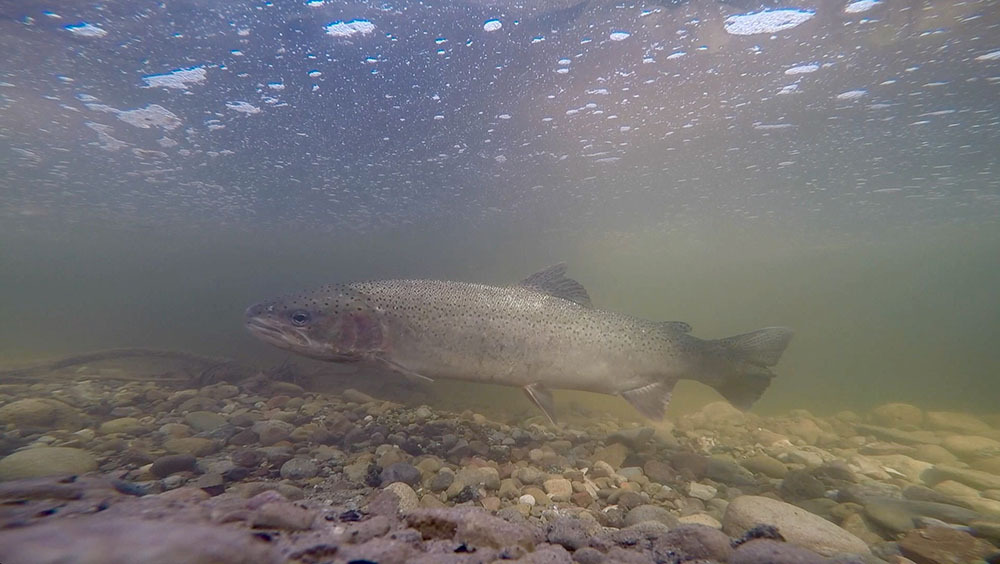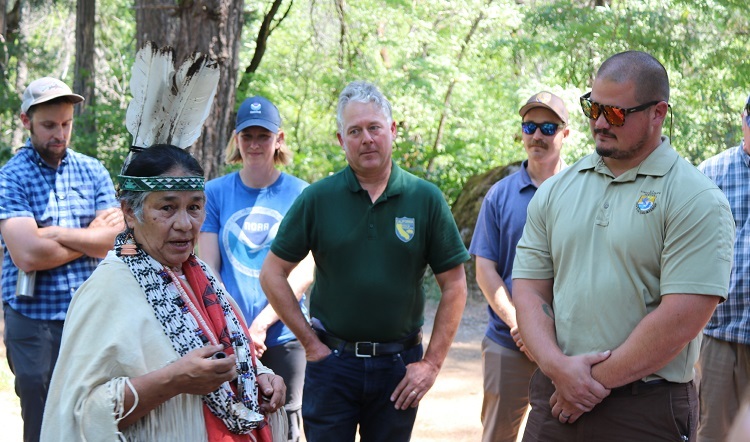From Sportfishing
Fish Report for 7-18-2022

CDFW Recommends “Hoot Owl” Practices for Fishing Inland Waters During Drought
7-18-2022
California Department of Fish & Wildlife
The California Department of Fish and Wildlife (CDFW) is asking recreational anglers to begin “Hoot Owl” practices when fishing – voluntarily changing how, when and where they fish to minimize stress and mortality among fish populations suffering from drought conditions.
“Hoot Owl” recommendations reference being active during times of day when owls can still be heard hooting. These times are typically earlier in the day when weather conditions are cooler. CDFW uses the term “Hoot Owl” to describe its guidelines for fishing during a drought which recommend fishing before noon on certain inland waters, as even catch-and-release angling during the hottest parts of the day can greatly increase fish stress and mortality.
“California's drought cycles require all of us to work together to manage our fisheries,” said CDFW Inland Fisheries Manager Sarah Mussulman. “Multiple years of drought plus fluctuations in the timing of precipitation creates many challenges for our cold-water fish species. Anglers can play a part in lessening impacts to their favorite fishery by not fishing past noon during the hot summer months.”
Coldwater species such as trout, salmon and steelhead have the greatest likelihood of being affected by the drought this year, but low water levels and high-water temperatures can potentially affect all inland aquatic species.
CDFW has introduced a series of voluntary “Hoot Owl” Recommendations – directing anglers to focus their fishing during the cooler “hoot owl” periods of the day when water temperatures are lowest. A watchlist of specific waters anglers should fish before noon is included and will be updated as conditions change. Sustained afternoon water temperatures exceeding 67 degrees Fahrenheit for trout fisheries could trigger additions to the list.
Currently, the list of waters include:
- Lower Owens River (Pleasant Valley Dam downstream to Five Bridges) in Mono County
- Hot Creek in Mono County
- Mill Creek (Walker Basin) in Mono County
- Lower Rush Creek (Grant Lake to Mono Lake) in Mono County
- Bridgeport Reservoir in Mono County
- Deep Creek in San Bernardino County
- Crowley Lake in Mono County
- Truckee River (Lake Tahoe to the Nevada state line) in Nevada, Placer and Sierra counties
- Upper Truckee River in El Dorado County
As conditions change, CDFW will post the updated list on the “Hoot Owl” WaterWatchlist page.
Elevated water temperatures, lower oxygen levels, disease, low flows and low water levels are among the drought-related effects impacting many of California’s coastal waters and inland fisheries.
To reduce fish stress during the drought, anglers can:
- Minimize the time you spend "fighting" the fish and any hands-on handling.
- Use rubber or coated nylon nets to protect a fish's slime layer and fins.
- Quickly remove the hook with forceps or needle-nosed pliers.
- Minimize the amount of time the fish is exposed to air, especially when the weather is warm.
- Keep your hands wet when handling the fish.
- If the fish is deeply hooked, do not pull on the line. Instead, cut the line as close as possible to where it is hooked and leave the hook so it can dissolve.
- Allow the fish to recover in the net before you release it.
- If the fish does not stay upright when you release it, gently move it back and forth.
- Avoid fighting fish from deeper, cooler waters and bringing them into warmer waters at the surface if your intention is to release them.
- Target fisheries that have stable water levels and species that are more resilient to elevated temperatures.
CDFW suggests all anglers follow these best practices even if anglers are only interested in harvesting fish to eat. Mortality may result from non-targeted species caught and released or fish outside of legal size limits that must be returned to the water.
< Previous Report Next Report >
More Reports

7-18-2022
The California Department of Fish and Wildlife (CDFW) has initiated a status review for Southern California steelhead and invites data...... Read More

7-13-2022
Drought Action Moves Endangered Salmon Back into Their Historical Habitat for First Time Since Construction of Shasta Dam The Winnemem Wintu...... Read More

Website Hosting and Design provided by TECK.net